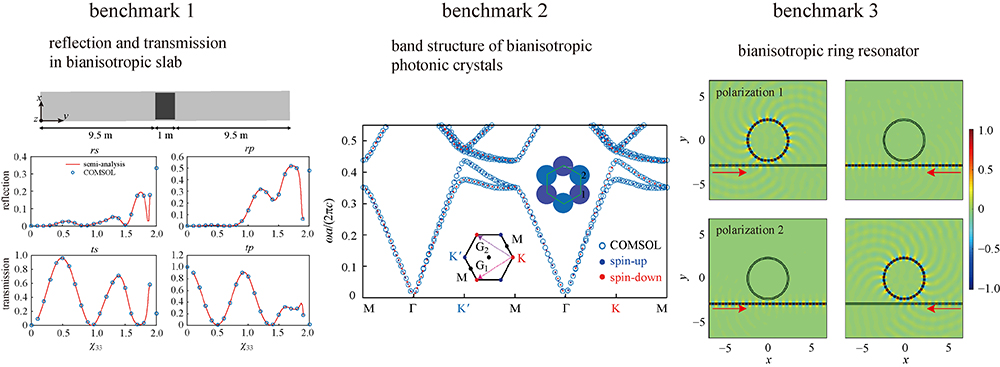Recent progress in chiral photonics, i.e., bianisotropic metamaterials [
1–
7] and bianisotropic metasurfaces [
8–
15], has significantly advanced our understanding of light transport in complex photonic structures and spurred numerous applications. Indeed, bianisotropic metamaterials have been used to realize novel resonators [
1,
2,
6] and construct photonic topological insulators [
4,
5,
7]. Bianisotropic metasurfaces have been used to manipulate the polarization of light [
8,
9] and to achieve exotic refraction and transmission of light [
10–
14]. In metamaterials or metasurfaces, it is common to use optically complicated structures inside each unit cell together with a very large number of inclusions to obtain certain functionalities. Thus the complete multiple scattering of light among all the inclusions is hardly traceable. Therefore, under proper approximation, the chiral metamaterials [
15–
20] or chiral metasurfaces [
21,
22] can be described using effective constitutive parameters (permittivity and permeability), which in principle accounts for the bianisotropic response of the complicated unit cell. Notably, the grading effect in a wide range of metasurfaces, e.g., with a rotated orientation of each unit cell structure, can also be included in the spatial dependent bianisotropic constitutive parameters in the effective medium description.






